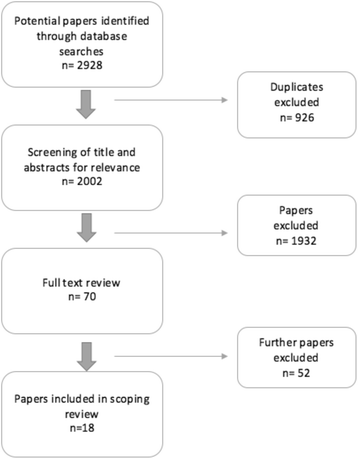Educational standards for training paramedics in ultrasound: a scoping review
- PMID: 28623905
- PMCID: PMC5473963
- DOI: 10.1186/s12873-017-0131-8
Educational standards for training paramedics in ultrasound: a scoping review
Abstract
Background: Paramedic-performed out-of-hospital ultrasound is a novel skill that has gained popularity in some services in recent years. In this setting point-of care ultrasound (POCUS) can provide additional information that can assist with management and guide transport to the most appropriate facility. We sought to explore the different educational approaches used for training paramedics in ultrasound in the out-of-hospital setting.
Methods: Ovid MEDLINE, EMBASE, EBM Reviews, The Cochrane Library, CINAHL plus, The Monash University Research Repository and the British Thesis Library were searched from the 1st of January 1990 to the 6th of April 2016. Google Scholar was searched and reference lists of relevant papers were examined to identify additional studies. Articles were included if they reported on out-of-hospital and POCUS educational approaches for paramedics.
Results: A total of 2002 unique articles were identified of which 18 articles met the inclusion criteria. Most articles reported combined cohorts of emergency providers with varying years of experience though most operators were POCUS naïve. The most common clinical assessment for which paramedic POCUS curricula was described was the focused assessment sonography for trauma (FAST) examination. Education programs varied from two-minutes to two-days with all studies including both didactic and practical training.
Conclusion: Education programs for POCUS for paramedics vary considerably, and do not appear to align with qualification level or clinical experience. Further research investigating education and subsequent clinical application of POCUS by paramedics is required, as well as prospective, outcome based studies in order to measure the clinical utility of out-of-hospital POCUS.
Keywords: Education; Out-of-hospital; Paramedic; Training; Ultrasound.
Figures
References
-
- Davison K, Forbes MP. Pre-hospital medicine: A glimpse of the future. Australasian J Paramedicine. 2015;12:5.
-
- El Sayed MJ, Zaghrini E. Prehospital Emergency Ultrasound: A Review of Current Clinical Applications, Challenges, and Future Implications. Emergency Medicine International. 2013. http://dx.doi.org/10.1155/2013/531674 - PMC - PubMed
-
- Jaffer U, Aslam M, Jaffer A, Standfield N, Pennell A. Emergency ultrasound in the prehospital setting. J Paramed Pract. 2011;3:83–86. doi: 10.12968/jpar.2011.3.2.83. - DOI
-
- Nakahara S, Matsuoka T, Ueno M, Mizushima Y, Ichikawa M, Yokota J, Yoshida K. Predictive factors for undertriage among severe blunt trauma patients: what enables them to slip through an established trauma triage protocol? J Trauma Acute Care Surg. 2010;68:1044–51. doi: 10.1097/TA.0b013e3181aca144. - DOI - PubMed
Publication types
MeSH terms
LinkOut - more resources
Full Text Sources
Other Literature Sources
Medical
Miscellaneous


